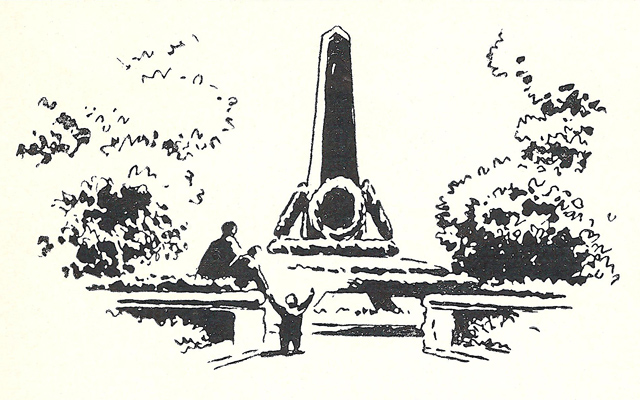Common Grave of Communists
History of Common grave in the center of Petrozavodsk dates back to June 2, 1919, when three communists who died on the frontline were buried here. Then the burials continued. So, among others, on June 22, 1919 two Finnish communists from the 164th Finnish Infantry Regiment were buried here – Company Commander Ahto Lampinen and Platoon Commander Viktor Bakman. In July, the bodies of the 21st fallen men from the 164th Finnish Infantry Regiment, including Battalion Commander Viking Sevelius, were reburied to Common Grave of Communists. On July 12, 1922 on Common Grave of Communists was erected an obelisk, made according to the sketch of the former art teacher Konstantin Sobakin. In June 1923 Commander of 32nd (Uhtua) Company of Special Task Units Eino Osa, who died after being wounded in a border skirmish, was buried here; and on October 4, was reburied here Georgy Lavrov, Chairman of the 3rd Local Control Border Commission, who died in a border incident. In 1926, People's Commissar of the Workers' and Peasants' Inspection of the Karelian ASSR Jaakko Rahja (the eldest of the Rahja brothers) was buried in the Common Grave of Communists; and on May 26, 1929 – Chairman of the Central Executive Committee of the Karelian ASSR Santeri Nuorteva and First Secretary of the Karelian regional committee of the AUCP(b) Johan Järvisalo. Unlike the burials in 1919, each of these communists has his own tombstone. However, in 1937, the tombstone of the Finnish bourgeois nationalist Santeri Nuorteva was removed and was restored in the beginning of the Khrushchev Thaw only. The last burials in the Common Grave of Communists were in 1944. In 1969, in connection with the erection of Eternal Flame memorial, granite obelisk from the Common Grave of Communists was dismantled and reused at the burial site of the Soviet soldiers in Solomennoye. |